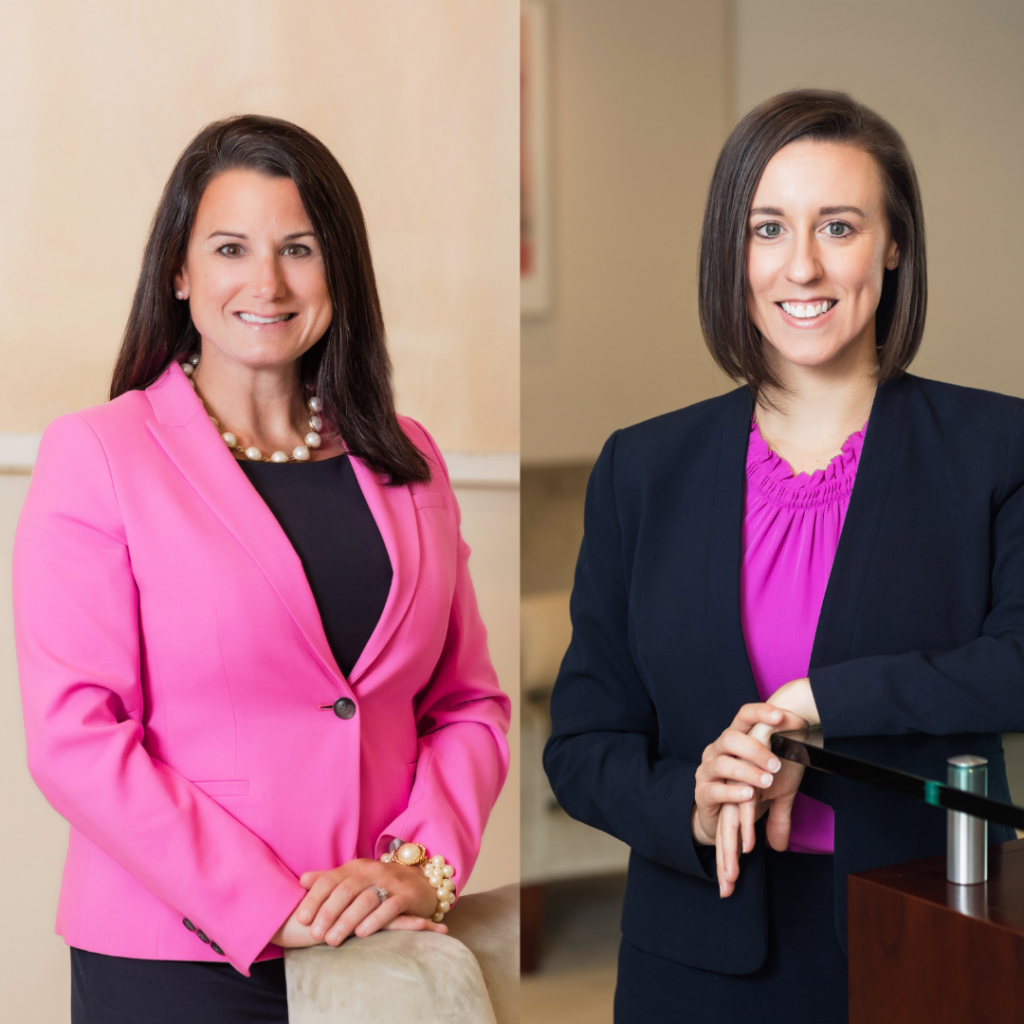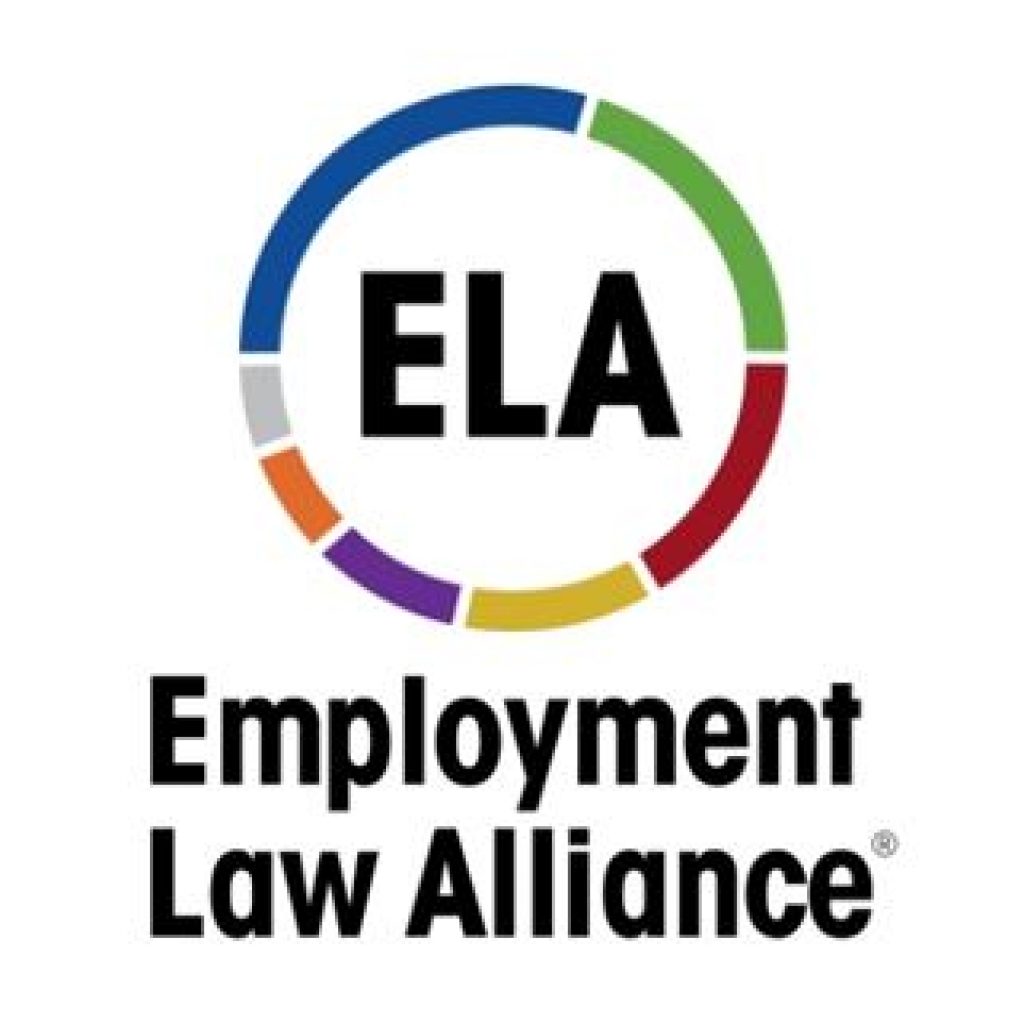DOL Issues FFCRA Regulations – And (No April Fooling) There Are Some Surprises!!
On April 1, 2020, the effective date of the Families First Coronavirus Response Act, the Department of Labor issued its implementing regulations. While much of the regulations reiterates the informal guidance that was previously provided in the DOL’s extensive Questions and Answers, there are some major additions and changes of which covered employers must be aware:
Summary of the Families First Coronavirus Response Act. As we detailed in our FFCRA E-lert as well as our FAQs, the FFCRA contains two paid leave mandates:
- The Emergency Paid Sick Leave (E-PSL) Act provides 80 hours (full-time employees) or “two weeks” (part-time employees) of paid leave at the greater of the employee’s regular rate or the applicable minimum wage, to a maximum of $511 per day and a total of $5,110, if the employee is unable to work or telework for the following reasons:
- The employee is subject to federal, state, or local quarantine or isolation order
- A health care provider (meaning a licensed doctor of medicine, nurse practitioner, or other health care provider permitted to issue a certification for purposes of the Family and Medical Leave Act) has advised the employee to self-quarantine
- The employee has symptoms of COVID-19 and is seeking diagnosis
E-PSL may be paid at 2/3 the greater of the employee’s regular rate or the applicable minimum wage, to a maximum of $200 per day and a total of $2,000, to an employee who is unable to work or telework for any of the following reasons:
-
- The employee is caring for an individual under quarantine
- A child’s school or place of care is closed or the child care provider is unavailable due to COVID-19
- Some other substantially similar condition specified by the Secretary of HHS in consultation with the Secretaries of Labor and Treasury
- The Emergency Family and Medical Leave Act (E-FMLA) allows employees to use their 12 weeks of FMLA leave (and grants such leave to certain previously ineligible employees) if they are unable to work or telework because they have a bona fide need to care for a child because of the COVID-19-related closure of the child’s school or child care facility, or the unavailability of a child care provider. After the first “ten days” of unpaid FMLA leave (which may be covered by E-PSL or other paid leave, at the employee’s choice), the remainder of E-FMLA leave is paid at 2/3 of the employee’s regular rate, up to a maximum of $200 per day, and $10,000 in total.
Ten Days = Two Weeks. As explained in the Discussion of the regulations and reflected in the Summary above, the FFCRA provides two weeks of E-PSL. It also provides that the first ten days of E-FMLA are unpaid, while the remaining portion of the 12-week period (relating to child care) is paid. Because E-PSL and the E-FMLA leave were intended to work together, the regulations apply a two-week, rather than ten-day, unpaid period to E-FMLA.
Changes in Definitions. The regulations reiterate many of the definitions that were included in the FFCRA and expanded in the DOL’s Q&A. However, there were some significant additions to the definitions:
- “A quarantine or isolation order.” On an issue of major significance, the DOL expanded this definition beyond formal quarantine or isolation orders (i.e. directives under applicable state law by state or local health officials to specific individuals or groups of individuals based on possible or actual infection) to include “containment, shelter-in-place, or stay-at-home orders issued by any Federal, State, or local government authority.” (Emphasis added). The DOL also includes the situation when a Federal, State, or local government authority has advised categories of citizens (e.g., of certain age ranges or of certain medical conditions) to shelter in place, stay at home, isolate, or quarantine. (See below for how this is actually applied, as it is more limited than it first appears).
- “Child Care Provider.” This definition goes beyond licensed or paid care providers to include family members or friends who regularly care for the child.
- “Individual” means an employee’s immediate family member, a person who regularly resides in the employee’s home, or a similar person whose relationship creates an expectation that the employee would care for the person under quarantine. The DOL makes the perhaps obvious clarification that it does not include persons with whom the employee has no personal relationship.
Reasons for E-PSL. The regulations offer further clarification (and expansion) of certain of the reasons for which employees may take E-PSL.
- A quarantine or isolation order (whether of the employee or another individual) must result in the employee being unable to work even though the employer has work for them. The DOL goes on to clarify that an employee may not take E-PSL where the employer does not have work for the employee as a result of the order or other circumstances. Thus, for example, if the employer is required to furlough employees or shut down operations as a result of the order, the affected employees are not entitled to take E-PSL. In its Discussion of the regulations, the DOL offers several illustrative examples of this provision:
- If a coffee shop closed due to a downturn in business or a stay-at-home order, an employee who is subject to a stay-at-home order would not be able to work even if he were not required to stay at home. Therefore, the employee would not be able to use E-PSL.
- If a law firm permits its lawyers to work from home, a lawyer would not be prevented from working by a stay-at-home order, and thus may not take E-PSL. But she would not be able to telework in the event of a power outage or similar extenuating circumstance that prevented her from teleworking and would therefore be eligible for paid sick leave during the that time due to the quarantine or isolation order.
- A health care provider can advise the employee to self-quarantine if the employee has COVID-19, may have COVID-19, or (somewhat surprisingly) “is particularly vulnerable to COVID-19.” (Emphasis added). This may include older employees and those with underlying health care conditions, in order to avoid possible exposure.
- Seeking diagnosis is limited to the time that the employee is unable to work because they are taking affirmative steps to obtain a medical diagnosis, such as making, waiting for, or attending an appointment for a test for COVID-19.
- If a child’s school or place of care has been closed, or the child care provider is unavailable, the employee is entitled to E-PSL and E-FMLA only if “no other suitable person is available to care for the child during the period of such leave.” In its Discussion of the regulations, the DOL further elaborates that a “suitable individual” can be a co-parent, co-guardian, or a usual child care provider.
Calculation of Pay. The DOL made a few changes and clarification on how to calculate paid leave.
- For Part-Time Employees with Varying Schedules. The DOL provides a slightly different calculation for part-time employees without a regular weekly schedule than it had previously provided in its Q&A, using a daily rather than a two-week average:
- If the part-time employee has been employed for at least six months, the employee is entitled to up to the number of hours of E-PSL equal to fourteen times the average number of hours that the employee was scheduled to work each calendar day over the immediately prior six-month period, including any hours for which the employee took leave of any type.
- If the part-time employee has been employed for fewer than six months, the employee is entitled to up to the number of hours of E-PSL equal to fourteen times the number of hours the employee and the employer agreed to at the time of hiring that the employee would work, on average, each calendar day. If there is no such agreement, the employee is entitled to up to the number of hours of E-PSL equal to fourteen times the average number of hours per calendar day that the employee was scheduled to work over the entire period of employment, including hours for which the employee took leave of any type.
- In its Discussion (although not in the regulations themselves), the DOL also states that employers may use twice the number of hours that the employee was scheduled to work per workweek, on average, over the six-month period.
- E-FMLA Pay. As an alternative to full-day calculations, the amount of pay for E-FMLA leave may be computed in hourly increments. Thus, for each hour of paid E-FMLA, the employer would pay the employee two-thirds of the employee’s average regular rate.
Counting 500 Employees. In addition to affirming prior guidance that the count includes full-time and part-time employees, employees on leave, jointly-employed temporary placement agency employees, and day laborers supplied by a temporary placement agency, the DOL states that the count does not include workers who have been laid off or furloughed and have not subsequently been reemployed – a point of some significance in light of the current economic crisis.
The Small Business Exemption. The regulations reiterate the requirements for the small business exemption that were set forth in the DOL’s Q&A. A small business may claim this exemption if an authorized officer of the business has determined that:
- The provision of paid sick leave or expanded family and medical leave would result in the small business’s expenses and financial obligations exceeding available business revenues and cause the small business to cease operating at a minimal capacity;
- The absence of the employee or employees requesting paid sick leave or expanded family and medical leave would entail a substantial risk to the financial health or operational capabilities of the small business because of their specialized skills, knowledge of the business, or responsibilities; or
- There are not sufficient workers who are able, willing, and qualified, and who will be available at the time and place needed, to perform the labor or services provided by the employee or employees requesting paid sick leave or expanded family and medical leave, and these labor or services are needed for the small business to operate at a minimal capacity.
The regulations add that, in order to elect this small business exemption, the employer must document that a determination has been made pursuant to the specified criteria. This documentation is not sent to the DOL, but simply retained in the employer’s files – presumably to be available for inspection by the DOL if questions later arise.
Of note, the regulations specifically state that, regardless of whether a small business chooses to exempt one or more of its employees, the employer is still required to post the mandatory FFCRA notice.
Intermittent Leave. The regulations state that the employer and employee must mutually agree to the use of intermittent leave under the FFCRA, and then go on to reiterate the conditions under which intermittent E-PSL or E-FMLA leave may be permitted, as set forth in its Q&A.
Unpaid E-FMLA Leave and Other Paid Leave. Although E-PSL may be used to cover the first two unpaid weeks of E-FMLA leave, there may be circumstances where the employee has used up part or all of their E-PSL prior to E-FMLA leave. The employee is then able to choose to substitute other earned or accrued paid leave provided by the employer, such as regular sick leave, vacation or general paid time off. This paid leave will run concurrently with the unpaid E-FMLA. If the employees chooses not to substitute, or has no other paid leave available, the remainder of the two-week period will be unpaid.
E-FMLA and the Substitution of Paid Leave. It appears that the DOL will now allow employers to substitute their existing paid leave programs for paid E-FMLA leave and receive a tax credit toward the statutory 2/3 cap. (E-PSL remains a new bank of leave). Under the provisions of the regular FMLA, employers may require employees to substitute available paid leave for unpaid FMLA leave, running concurrently. The FFCRA regulations are confusing, as they take apparently internally inconsistent positions with regard to the substitution of paid leave for E-FMLA, likely as a result of the rushed drafting process. Thus, one section provides that employers cannot require employees to substitute available paid leave for paid provisions of E-FMLA. Three other sections, however, specifically state that employers can require such substitution – and in such case, would need to pay employees their full pay, but could take a tax credit for 2/3 of the amount under the FFCRA. This unfortunate inconsistency will need to be addressed by the DOL.
Notably, however, the DOL has updated its Q&A to now state that, after the initial two weeks of unpaid E-FMLA, employers can require employees to use available paid leave (e.g. vacation, personal, sick (depending on whether it is permitted under any applicable statute) or PTO) to cover the remaining E-FMLA. The leave would be fully paid through the paid leave, and the employer could take the statutory tax credit against 2/3 of the amount up to $200 per day. Once the paid leave is exhausted, however, the remaining leave would be paid under the FFCRA at 2/3 the employee’s regular pay up to the $200 daily cap.
Twelve Weeks of E-FMLA in 2020, Regardless of the 12-Month Period. As noted above, the FFCRA adds the need to care for a child because of a COVID-19-related school/place of care closure or unavailability of a child care provider to the reasons for which an employee may use their existing 12-weeks of FMLA leave. The regulations make clear, however, that the employee is also limited to 12 weeks of E-FMLA altogether during the effective period (April 1 – December 31, 2020), even if the 12 weeks span two of the employer’s (non-calendar year) 12-month FMLA periods. For example, if an employer’s twelve-month period begins on July 1, and the employee took seven weeks of E-FMLA leave in May and June, 2020, the employee could only take up to five additional weeks of the new 12-week allotment of FMLA leave for E-FMLA purposes between July 1 and December 31, 2020, even though the first seven weeks fell in the prior twelve-month period.
The regulations confirm that E-FMLA is not a new bank of FMLA leave (except as to newly-covered employees not eligible for regular FMLA). Rather, the employee may use their existing bank for this new purpose, and if the employee has already used up their FMLA for other reasons, they will not have any E-FMLA leave available.
Posting the Required Notice. The regulations make some additional points with regard to the notice:
- Employers furnishing notices to sensory-impaired individuals must also comply with all applicable requirements under Federal or State law.
- Employers are not required to translate or provide the notice in languages other than English.
- For employers who are covered by the expanded FMLA but are not covered by the other provisions of the FMLA, posting of the mandatory FFCRA notice satisfies their general notice obligation under the FMLA.
Required FMLA Forms and Notices? Under the regular FMLA, the employer is required to comply with “specific notice” obligations, such as the notice of eligibility, the notice of rights and responsibilities, and written designation of FMLA leave. In its Discussion, however, the DOL notes that it did not adopt these requirements for E-FMLA. It states, however, that an employer that has established practices for providing such specific notices may prefer to apply their existing practices to E-FMLA leave users.
Employee Notice to the Employer. The FFCRA provides that an employer can require employees to follow reasonable notice procedures after the first workday for which E-PSL is taken (other than in the case of the closure of a school or place of care, or unavailability of a child care provider, for which notice must be given as soon as practicable). The regulations make several points with regard to this requirement:
- “Reasonableness” will be determined under the facts and circumstances of each particular case.
- Employees can be encouraged, but not require, to give notice as soon as practicable.
- The regulations also state that if an employee fails to give proper notice, the employer should give them notice of the failure and an opportunity to provide the required documentation prior to denying the request for leave.
- Generally, it will be reasonable for notice to be given by the employee’s spokesperson (e.g., spouse, adult family member, or other responsible party) if the employee is unable to do so personally.
- Generally, it will be reasonable for an employer to require oral notice and sufficient information for an employer to determine whether the requested leave is covered by E-PSL or E-FMLA.
- An employer may not require the notice to include documentation beyond what is allowed by in the regulations (which essentially duplicates the documentation identified by the Internal Revenue Service as necessary for claiming the tax credit, as we discussed in our March 31 E-Lert. The one difference is that, with regard to a need to care for a child due to the COVID-19-related school/place of care closure or child care provider unavailability, the employee must represent that no other “suitable” person will be providing care during the leave period).
Health Care Coverage. The regulations contain several new provisions with respect to health care coverage.
- In addition to requiring continuation of health care coverage during FFCRA leave, the regulations state that if an employer provides a new health plan or benefits or changes health benefits or plans while an employee is taking E-PSL or E-FMLA, the employee must be entitled to the new or changed plan/benefits just as if they were not on leave.
- Any other plan changes (e.g., in coverage, premiums, deductibles, etc.) which apply to all employees of the workforce would also apply to employees on FFCRA leave.
- Notice of any opportunity to change plans or benefits must also be given to an employee taking E-PSL or E-FMLA leave. If the employee requests the changed coverage, the employer must provide it.
- The right to health care benefits stops if and when employment would have terminated if the employee were not on E-PSL or E-FMLA (e.g., if the employee fails to return from leave, or if the employer closes its business). Notice of eligibility to continue coverage under the Consolidated Omnibus Budget Reconciliation Act of 1986 (COBRA) must be provided.
Return to Work. The regulations confirm that, although the employee generally must be reinstated to their job position following E-PSL or E-FMLA leave, they are not protected from employment actions, such as layoffs, that would have affected them regardless of the leave.
Recordkeeping. An employer must keep all documentation related to an employee’s E-PSL or E-FMLA requests for four years, regardless of whether the leave was granted or denied. In addition, if an employee provided oral statements to support their request for E-PSL or E-FMLA leave, the employer is required to document and maintain such information in its records for four years.
No Retroactive FFCRA Leave. Employees may not receive retroactive E-PSL or E-FMLA leave for leave taken prior to April 1, 2020. Similarly, an employer may not receive the tax credit reimbursement for COVID-19-related leave that it may have provided prior to April 1, 2020.
E-PSL and Change in Employers. An employee is limited to a total entitlement of 80 hours (or the two-week pro-rated equivalent for part-time employees) of E-PSL, regardless of whether they change employers. So an employee who has taken 80 hours of E-PSL and then changes employers is not entitled to any additional E-PSL from the new employer. If they use some E-PSL and then switch employers, they may use only the remaining amount of their 80-hour E-PSL bank, assuming that the new employer is covered by the FFCRA.
This continues to be a fast-moving and ever-changing situation, and the applicable legal analysis may change as well. We will provide updates on developments as they occur. Please check our FAQs often for the latest information.







